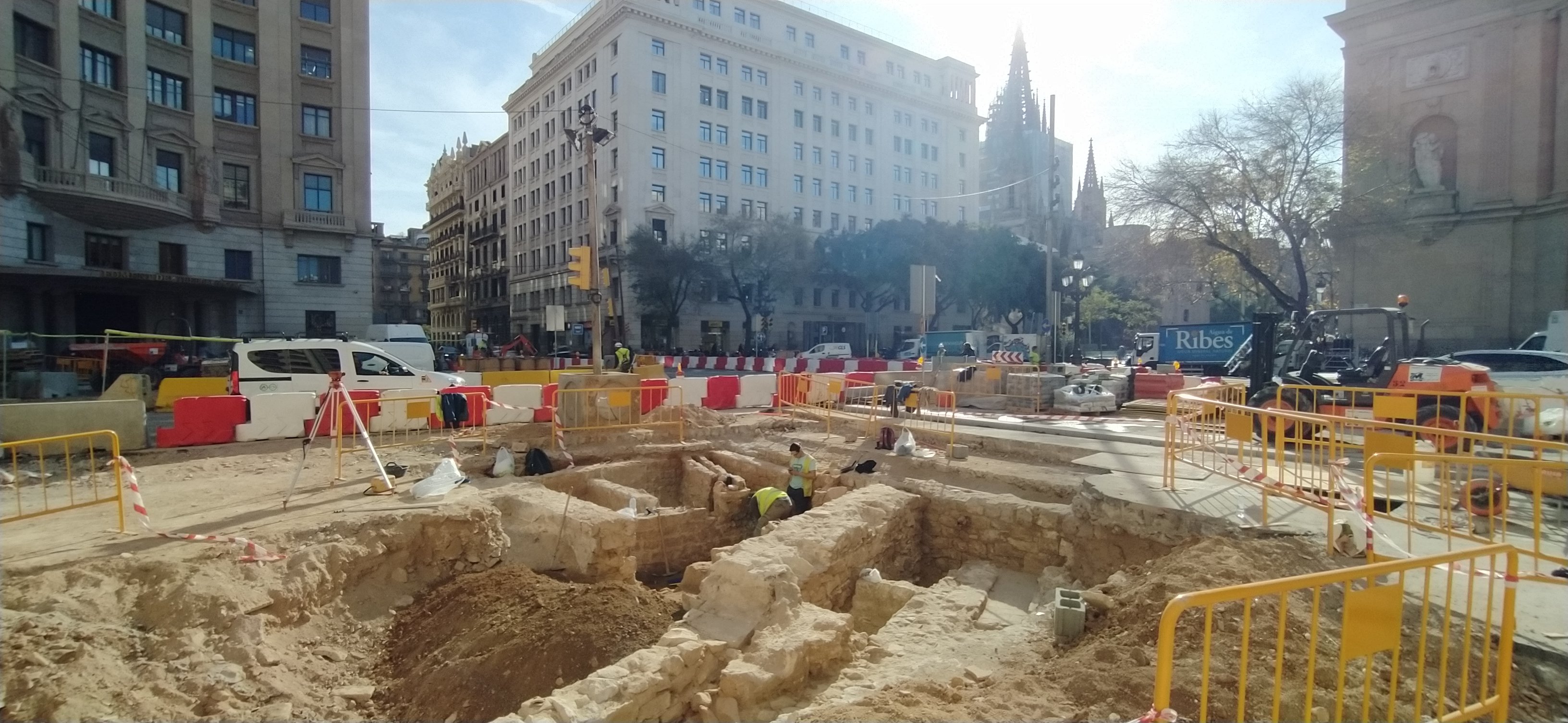Archaeologists from the Barcelona City Council have confirmed the discovery of the skeleton of an adult found inside a late Roman-era tomb, dated to the 5th Century of the Common Era, located in Plaça d'Antoni Maura. It was found in the context of the works to remodel Via Laietana, one of the main arteries that cuts through the oldest part of the city. According to local TV station betevé, the body is that of a strong, adult individual and is in a very good state of preservation, although the lower part of the legs and a fragment of the right arm are missing. The remains will be exhumed by the municipal archeology service and transferred to a laboratory for a more detailed analysis.
🔴 T'ho avancem a @beteve | Troben una tomba romana amb un cadàver adult a les obres de la via Laietana https://t.co/qzwJQZPwxE
— btv notícies (@btvnoticies) February 13, 2023
Amid the disruption of the road works, the excavation at the Plaça d'Antoni Maura site has provided a new attraction for both locals and tourists over the last few weeks. Now, the specialists from the city's archaeology service are working painstakingly to remove the skeletal remains, a task that can take hours. Physical anthropologist Júlia Benet, supervisor of the dig, told the TV channel that they already have some initial ideas of what this native of the Roman city of Barcino was like: "The bones are thick and long; therefore, the person is a robust individual. We also know that it is an adult because the bones have fully fused and with permanent teeth." The age range estimated is between 35 and 60 years old. Archaeologists will also try to find out the cause of death.
According to betevé, the human remains appeared with a fragment of coin near the mouth, a traditional practice by Greeks and Romans as an offering to Charon, the ferryman who according to Greco-Roman mythology transports the dead to the afterworld. In fact, at the time the tomb is dated, the 5th century, this custom was already outdated, since Barcelona was a fully Christian city. The place where the body was found is located outside the walled enclosure of the Roman city, a hundred metres away from where the Roman wall ran. It should be remembered that in Roman times burials were not carried out within the walls, as evidenced by the sepulchral area in Plaça de la Vila de Madrid, near the Rambla dels Estudis.
Works due to finish in April
Since March last year, the first phase of redevelopment works for Via Laietana have been underway, involving the upper half of the street, from Plaça Antoni Maura to Plaça Urquinaona, and the forecast is for them to be completed at the end of April. At the moment it is not expected that the archaeological find will significantly alter this calendar. As for the second phase, carrying on seaward from Plaça Antoni Maura to Correus, it will remain pending for the next mayoral mandate, which means that it will be the future municipal government that will decide if the work continues and exactly how it will be done.

